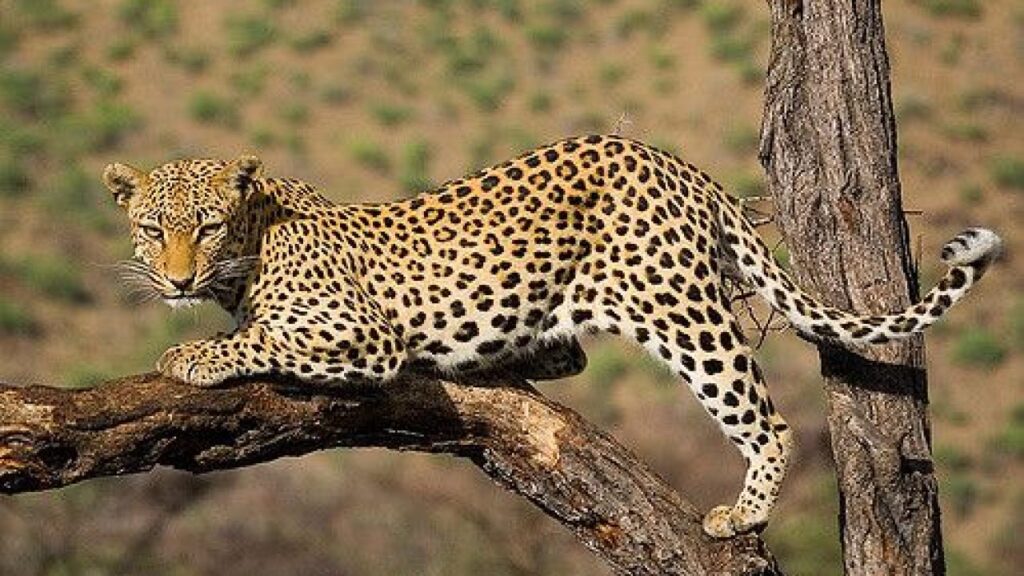Where can i see leopards in Tanzania
Where can i see leopards in Tanzania, Tanzania is among the premier destinations globally for observing leopards in their natural settings. Leopards are infrequently observed; but, in Tanzania, the likelihood of encountering them during a safari game drive increases significantly if you select the premier national parks renowned for leopard sightings.

Serengeti National Park
Serengeti National Park is an exceptional location for observing leopards, particularly during the wildebeest migration, which typically occurs from July to October, offering opportunities to witness their hunting behavior. Other significant wild creatures comprise wildebeest, zebra, lion, gazelle, giraffe, spotted hyena, elephant, serval, agama lizard, rock hyrax, secretary bird, rhinoceros, buffalo, cheetah, jackal, and aardwolf.
Ngorongoro Conservation Area
The Ngorongoro Conservation Area is an excellent location for observing leopards. This Conservation Area is home to several remarkable animal species, including wildebeest, lions, hartebeests, elephants, mountain reedbucks, zebras, spotted hyenas, hippopotamuses, buffaloes, gazelles, and the endangered black rhinoceros.
Lake Manyara National Park
Lake Manyara National Park hosts several migratory mammals from Tarangire National Park, including wildebeests, zebras, Thomson’s gazelle, and Grant’s gazelle. This park provides the possibility to observe leopards and many predators, including lions, black-backed jackals, bat-eared foxes, servals, honey badgers, African wild cats, spotted hyenas, African civets, genet species, and several mongoose species. The cheetah and the African golden cat are seldom observed. Other significant mammals comprise the elephant, baboon, Cape buffalo, lion, hippopotamus, wildebeest, bushbuck, impala, giraffe, zebra, and the smaller and greater flamingos.
Ruaha National Park
Ruaha National Park is an additional location to observe leopards in Tanzania. The park is renowned for elephant sightings in Africa and is thought to possess the highest concentration of elephants in East Africa. Additional fauna comprises the Greater and Lesser Kudu, Sable and Roan antelopes, wild dogs, lions, cheetahs, giraffes, zebras, impalas, elands, jackals, and bat-eared foxes.
Additional prominent locations to observe leopards in Tanzania encompass Selous Game Reserve, Arusha National Park, Kilimanjaro National Park, Kitulo National Park, Saadani National Park, Katavi National Park, and Mikumi National Park, among others.
Guidance on Tanzania Visa and Work Permit
It is necessary to acquire the tourist visa. Numerous tourists opt to acquire their visas prior to their arrival in Tanzania; nevertheless, visas can be effortlessly purchased upon arrival at any entrance point in Tanzania by paying USD 100.00 for a Tourist Visa, which will be issued immediately. Proof of yellow fever vaccination and a COVID-19 negative certificate may be required for travelers traveling from impacted countries. Visa, work permit, and other entry and exit stipulations, including customs and quarantine restrictions, are subject to frequent alterations. We recommend that you reach out to your local Tanzanian embassy or this source for the most current travel advice regarding Tanzania.
Tanzania car Rental Services
All Tanzania Safaris will assist you in arranging transportation in Tanzania based on your interests, budget, and the road conditions in the chosen sites inside the park. We propose Customized 4×4 Land Cruisers, priced from USD 200-250 per car per day with a driver/fixer, or 4×4 Safari Vans available from USD 200 per van per day with a driver. To estimate fuel costs, we must examine your itinerary to determine the miles and distance to be covered.
When is the optimal time to observe leopards in Tanzania?
Leopard sightings in Tanzania occur year-round, with optimal viewing from December to February and June to October, which are drier compared to March to May and November.
